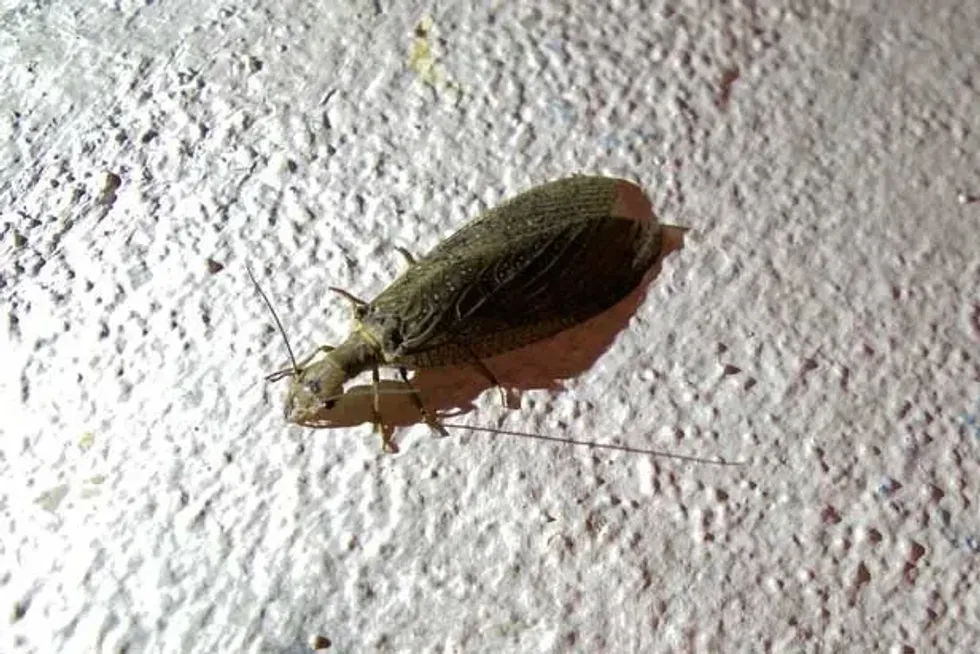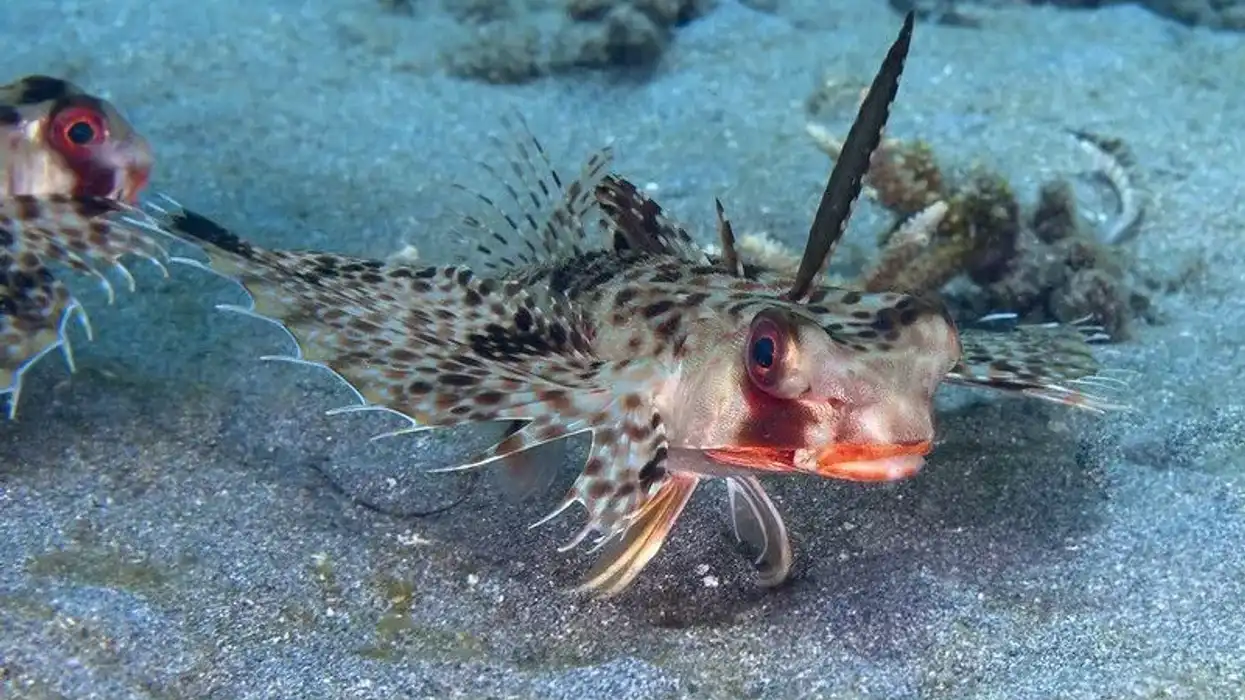Did you ever come across these small crawling insects that resemble centipedes? They are called hellgrammites. Most of the time found in freshwater streams and lakes and is famous with anglers as live baits. However, did you know that these hellgrammites grow into large Eastern dobsonflies?
Endemic to North America, the Eastern dobsonfly is a large winged insect with prominent mandibles. They are attracted to the lights on streets and are mostly nocturnal insects. And if handled roughly, the bite can be painful but not harmful and does not last for a long time.
The life cycle of dobsonfly is divided into four stages generally referred to as ELPA: egg, larva, pupa, adult. The larva stage lasts for a very long time than the adult phase of the winged Eastern dobsonfly. They are soft-bodied and vary from yellow to dark brown with translucent wings that can sometimes have a gray shade.
If you enjoy this article, check out stink bug facts and giant stonefly facts to find out more!
Eastern Dobsonfly Interesting Facts
What type of animal is an Eastern dobsonfly?
An Eastern dobsonfly (Corydalus cornutus) is an insect.
What class of animal does an Eastern dobsonfly belong to?
The Eastern dobsonfly (Corydalus cornutus) belongs to the Insecta class of the order Megaloptera.
How many Eastern dobsonflies are there in the world?
Eastern dobsonflies (Corydalus cornutus) are found in abundance in nature. There are 30 species of dobsonflies in the world.
Where do Eastern dobsonflies live?
Eastern dobsonflies (Corydalus cornutus) are found across eastern North America. They are found near the flowing streams from Canada to Mexico.
What is an Eastern dobsonfly’s habitat?
The freshwater bodies with a high amount of dissolved oxygen are the preferred habitat of these Eastern dobsonflies. Streams, rivers, lakes, and ponds provide habitat to their larvae.
Who do Eastern dobsonflies live with?
Eastern dobsonflies (Corydalus cornutus) are seen in groups, and they live close to their kind.
How long does an Eastern dobsonfly live?
The total lifecycle of Eastern dobsonflies (Corydalus cornutus) species lasts between two to five years. However, the adult winged Eastern dobsonfly lives for a maximum of one week. They are eaten by stream fish and crayfish in water. Birds and bats are natural predators of adult dobsonflies.
How do they reproduce?
The life cycle of the dobsonfly is divided into four stages generally referred to as ELPA: egg, larva, pupa, adult. The adults indulge in courtship rituals where the male Eastern dobsonfly attracts the females while chasing away other male dobsonflies.
After the female Eastern dobsonfly mates, she lays a coin-sized mass with a white, chalky substance all over it to protect the eggs laid in layers near streams. The female Eastern dobsonfly dies after laying eggs.
The females deposit the mass, which contains about 1000 eggs on a rock or a branch near streams. The females deposit about two to three egg masses.
It takes two to three weeks for dobsonfly eggs to incubate, after which the larvae hatch. Hatched larvae(hellgrammite) drop into water or crawl into the water.
The larval form is called hellgrammites. This stage lasts for up to five years, during which the larva undergoes 10-12 molts. The matured hellgrammite then starts to convert into a pupa, and the process takes from few days to few weeks.
And finally, the winged Eastern dobsonfly adults emerge. This stage of adults lasts only for a week, and during this time, they only mate and don’t tend to eat too.
What is their conservation status?
They are so abundantly found in nature that the conservation status of the Eastern dobsonfly (Corydalus cornutus) is of Least Concern. Eastern dobsonflies are not endangered.
Eastern Dobsonfly Fun Facts
What do Eastern dobsonflies look like?

The Eastern dobsonfly is a large winged insect with prominent mandibles. Typically adults’ wings are folded down when the fly is at rest. The wings of a dobsonfly are twice the length of its body. They have chewing mouthparts and have two antennae on the head. In addition, they have powerful sickle-shaped mandibles to draw blood with their bite.
Female lays a white chalky mass at multiple sites. These egg masses contain tiny gray cylindrical dobsonfly eggs.
The larvae hatch out and appear like the centipedes, with flattened bodies in brown, tan, or black colors. They are known as hellgrammites and grow to 2-3 in (5.08-7.6 cm) in length.
They have six legs and six to eight pairs of thick filaments replicating gills’ function for them to breathe under the water. For feeding, they use their powerful set of pinching mouthparts.
The pupae are yellow-orange in color with dark spots. The winged Eastern dobsonfly adults emerge, and they are soft-bodied. Adults can vary from yellow to dark brown with translucent wings that can sometimes have a gray shade.
How cute are they?
They are fearsome-looking insects with frightening large mandibles. The larva stage looks like a centipede. These large insects appear fascinating for a few as they linger in large numbers, attracted to lights on streets or outside the home at night.
How do they communicate?
Not much is known about the communication techniques of dobsonflies. Herigrammites probably depend on touch or chemical cues. The winged Eastern dobsonfly has scent glands, and during courtship, the male Eastern dobsonfly places their mandibles on females’ wings. Hence chemical cues and touch are essential ways of communication of Eastern dobsonflies.
How big is an Eastern dobsonfly?
Eastern dobsonflies are giant insects that grow to a length of 3.9-5.5 in (9.9-13.9 cm). They resemble stick insects.
How fast can Eastern dobsonflies move?
The exact speed at which Eastern dobsonfly travel is not available. They have a type of awkward fluttery flight. They also travel long distances, especially at night.
How much does an Eastern dobsonfly weigh?
The exact weight of the Eastern dobsonfly is not available. However, they weigh just a few ounces.
What are the male and female names of the species?
There are no specific terms for the male and female species of the Eastern dobsonfly (Corydalus cornutus).
What would you call a baby Eastern dobsonfly?
Eastern dobsonfly goes through many stages of development before becoming an adult dobsonfly with wings. The larvae come out of the eggs. Later, pupae stage, and finally, the fearsome-looking Eastern dobsonfly flies out. The larva stage is known as the hellgrammite.
What do they eat?
The dobsonflies are predaceous in their larvae stage. They feed on anything that swims or ambles by.
Their diet includes aquatic insects, small fish, and so on. The adult generally does not eat since they gain all the required nourishment in the larvae stage. Also, as their life is only for a few days or a week, and spends their time mating.
Are they harmful?
No, the Eastern dobsonfly (Corydalus cornutus) is not a dangerous or harmful insect. But Eastern dobsonflies do bite when handled roughly. The painful bite is not harmful. Since male insects have long mandibles, they can not bite, but eastern dobsonfly female with shorter and sharper mandibles tends to bite.
Would they make a good pet?
No, they are not taken in as pets. However, some anglers use the larvae of the Eastern dobsonfly as fish bait.
Did you know...
When an Eastern dobsonfly reaches adulthood, it stops eating and starts to mate.
The dobsonfly emits an unpleasant smell when threatened.
Eastern dobsonfly bites
The painful bite of an Eastern dobsonfly is not harmful and does not last for a long time. They do not bite unless handled roughly. The adult male dobsonflies have long and curved mandibles, while the females and larvae have smaller pincers that are sharp enough to pierce through human skin.
What do dobsonflies do?
Dobsonfly larvae reside in the water of rivers and streams and feed on many aquatic organisms, thus keeping a check on their population. The larvae are called hellgrammites and are very much used by the fishermen and anglers as live baits.
Here at Kidadl, we have carefully created lots of interesting family-friendly animal facts for everyone to discover! Learn more about some other bugs from our fairyfly facts and stick bug facts pages.
You can even occupy yourself at home by coloring in one of our free printable Eastern dobsonfly coloring pages.










